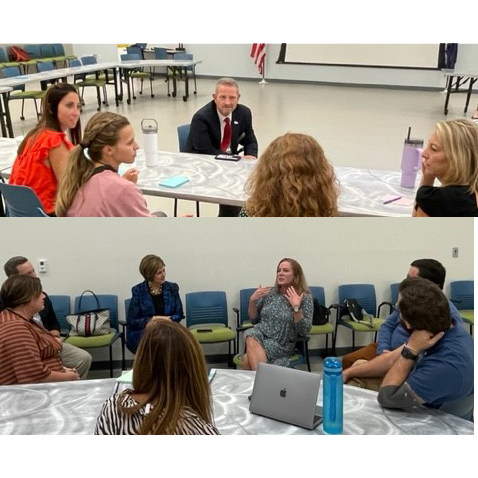
January 2024
KEA/KDE Spanish Immersion Program Partnership Provides Vital Connection with Spanish-speaking Students and Families

Some 25 educators and staff from Shelby County schools celebrated the completion of an eight-week BaseLang Spanish Immersion Program in November, aimed at increasing understanding and communication between schools and English learner populations moving into the school system.
The online program is a complete immersion into the language. Two hours a day, five days a week participants learn, develop, and sharpen their Spanish-speaking skills. Launched in 2020, the joint KEA/KDE initiative has since seen more than 200 educators complete the program. Teachers, principals, school administrators, bus drivers, a school psychologist, and a school nurse are among program graduates. Some 90 percent of participants have completed the program.
“From the time a family or student walks into a school, having someone who can welcome and explain school policies and procedures to them in their native language can make all the difference in creating a positive and productive experience for everyone involved,” said KEA President Eddie Campbell, who helped acquire a grant to fund the program from the National Education Association (NEA).
The program uses an evidence-based model taught by native Spanish speakers who live in Latin American countries. Each participant is partnered with an individual Spanish-speaking teacher through Zoom for the entire program and curriculum. The goal is that participants are able to hold a 30-minute conversation in Spanish after completing the course.
Matthew Courtney, a policy advisor for KDE’s Office of Continuous Improvement and Support, helps coordinate the program and has completed it himself. He believes that it not only helps bridge the language barrier, but cultural divides as well. “This program is incredibly rich in understanding the cultural elements and differences that can easily be overlooked when we are communicating with Spanish speaking parents and children,” he said. “It helped me understand how to better put them at ease in an unfamiliar situation.”
One participant pointed to the frustrations they felt each day trying to communicate in a new language and how that helped her understand how it must feel to those struggling with learning English. “Being humbled each day by my struggles to communicate my thoughts. This really reshaped my thoughts on the apparent struggles of our Spanish-speaking students.” Another participant explained how the level of exhaustion from just two hours of immersion helped her better relate to those students who are doing it all day. Another said the program has helped her craft a stronger relationship with students. “I now have a small ability to help some of our more isolated students (through the language barrier) be heard.”
For an individual school, a school district and across the Commonwealth, the goal of this program is creating a more welcoming learning environment to a population that is growing rapidly across Kentucky. In Shelby County, for example, English learners make up 16% of students in K-12. “This program allows us to better understand what these kids are going through,” said Courtney. “It provides an avenue to relate and connect to these students and ultimately teach them better.”
Now KEA and KDE want to expand the program and help districts build and implement their own program cohorts to help the English-learning students in their schools–and KDE is allowing district to use federal dollars to do so. “The sooner we can communicate effectively with our students, the better we can successfully educate them,” said Campbell. “This program provides a teacher, administrator, bus driver or a principal an opportunity to lead the way and shorten that gap.”
